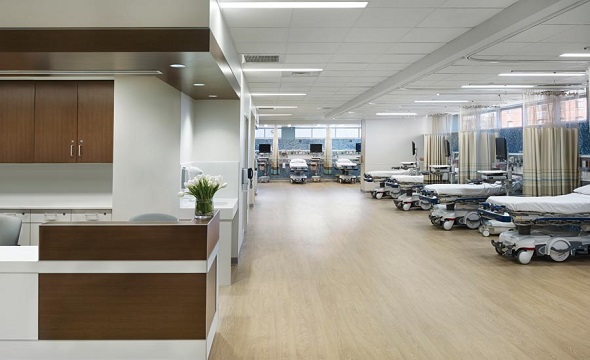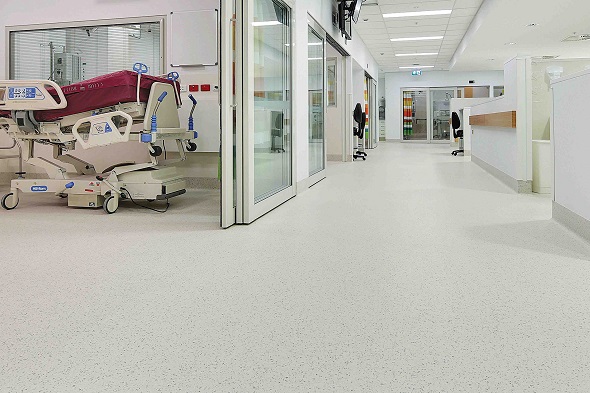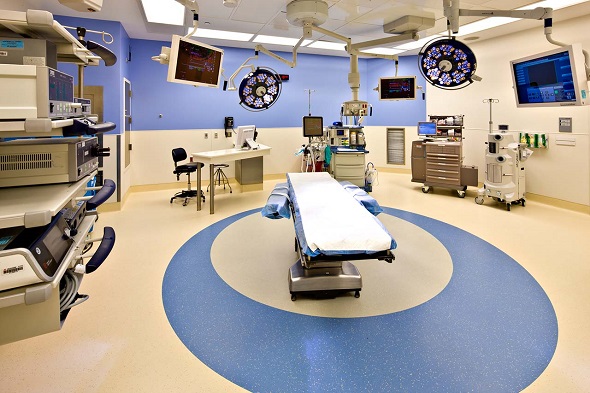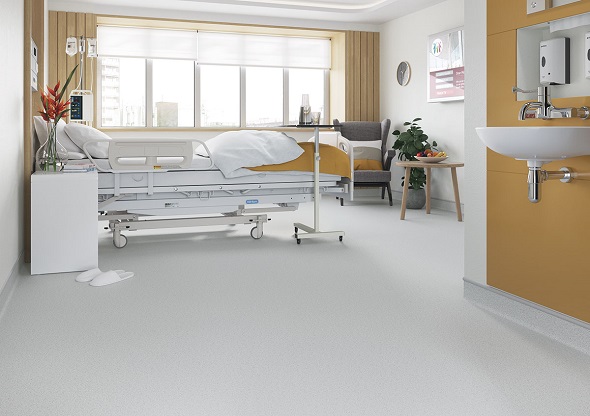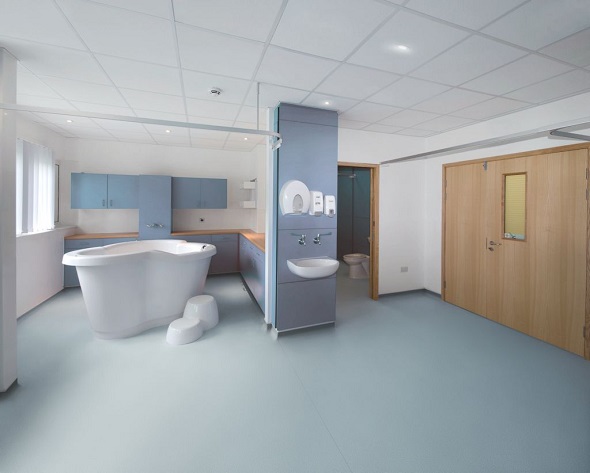All medical facilities require one important thing – quality healthcare flooring. Patients deserve healthcare flooring that is hygienic yet aesthetic pleasing while the facility needs flooring that is durable enough to withstand constant foot traffic and is easy to maintain on a daily basis. This is why the choice of flooring is so crucial in medical facilities.
Hospitals, in particular, are unlike any other facility in the healthcare field – they are open 24 hours a day and there is always people around. Making a smart hospital flooring decision could mean more efficient installations and easier maintenance in the long run. The right flooring option should be able to improve safety, reduce stress, facilitate patient satisfaction and allow for a solid return on your investment. Here are some of the specifications a hospital flooring should feature:
- Slip resistance – the floor should be stable and textured enough to prevent people from slipping and falling;
- Sanitation – the floor should be spill-resistant and sealed to prevent germs and microbes from spreading as well as easy to clean and maintain;
- Noise absorption – the floor should be able to absorb noise effectively to keep the environment quiet and peaceful;
- Cushioning – the floor should be cushioned enough to make it easier to walk;
- Aesthetic – the floor should induce sensations of calm and reassurance as well as communicate cleanliness and professionalism;
- Maintenace – the floor should be simple to install and easy to maintain, and be able to withstand heavy foot traffic and roller traffic like carts and patient transport.
When choosing a hospital floor, it’s best to do so by area. Hospitals are big facilities, and one flooring option is never going to do the entire job. Generally, different options are required. Let’s take a look at some of the most popular flooring for hospitals to their area of installation.
Entrance
The entrance area is the first impressions of your facility to patients and their families, so it must look presentable. Because it’s the area where patrons locate the services they need, it tends to experience the heaviest amounts of foot traffic. For that reason, you need flooring for hospitals that is both comfortable and durable and that also looks fantastic at first glance. Our suggestion here is the luxury vinyl tile (LVT). This flooring comes in a variety of eye-catching designs and textures and is also highly durable. It also requires minimal maintenance and lasts for decades.
Corridors and Clinical Rooms
Hallways undertake heavy amounts of foot traffic at nearly all times of the day and night. Aside from doctors, nurses, patients, their families and visitors, hallways also experience heavy amounts of rolling loads including equipment carts, wheelchairs, stretchers and med carts. This means the flooring for corridors needs to be highly durable for foot and rolling traffic. You’ll also want the floor to include evidence-based design schemes that promote stress-free environments while also creating clear paths that identify clinical rooms.
We suggest to go with either rubber flooring or LVT flooring. Both are scratch-resistant and are available in a variety of patterns, colours and textures. LVT in particular can be created to imitate natural textures, such as wood and stone but with better durability and a more affordable price than real materials.
Emergency Areas and Operating Rooms
These hospital areas require very strict infection control, so the flooring you choose must be easy to clean while promoting the utmost levels of cleaning. It should also be resilient enough to withstand heavy foot and roller traffic on a 24/7 basis and be easy to install because installation is key to prevent fluid and dirt from slipping underneath.
Sheet vinyl, LVT and linoleum flooring are excellent options for these areas. These floorings enable the use of heat welding during the installation process, making it possible to create a truly aseptic environment. All three options are also manufactured with a special coating that resists chemical staining from bodily fluids and medical products. Once installed, these floors eliminate the need to polish or wax, and this reduces maintenance disruption and cleaning costs. And due to their low emission of volatile organic compounds, these floors also promote better indoor air quality.
Patient Room
It’s not because the patient is in the hospital that his/her room can’t look like a home-like environment. The flooring used in these areas doesn’t have to be aseptic, which means you have more hospital flooring options to choose from like sheet tile, LVT and linoleum. In addition to allowing you to achieve the natural look of stone, wood, and other natural looks, these flooring selections are highly durable and all install rapidly for minimal disruption to staff and patient routines.
Hospital Bathroom
Hospital bathrooms not only need to be safe, but they also need to look spotless. For these areas, we recommend sheet vinyl, LVT or linoleums as these floors are easy to clean and maintain as well as slip-resistant.

